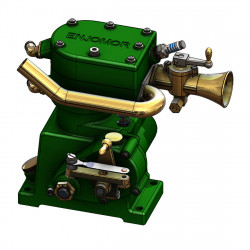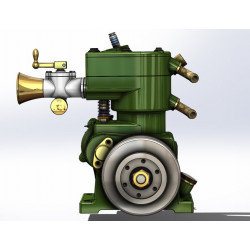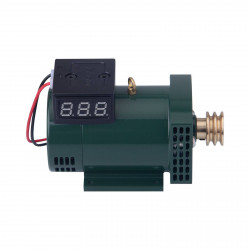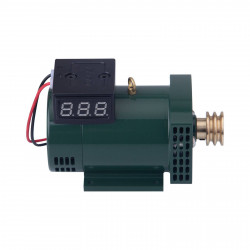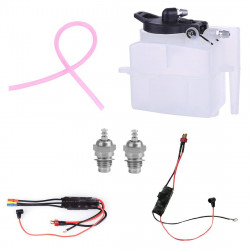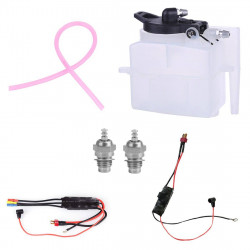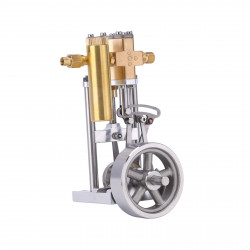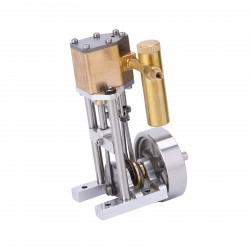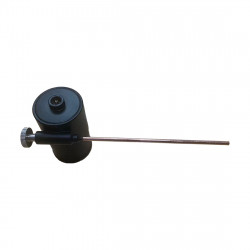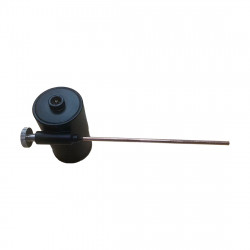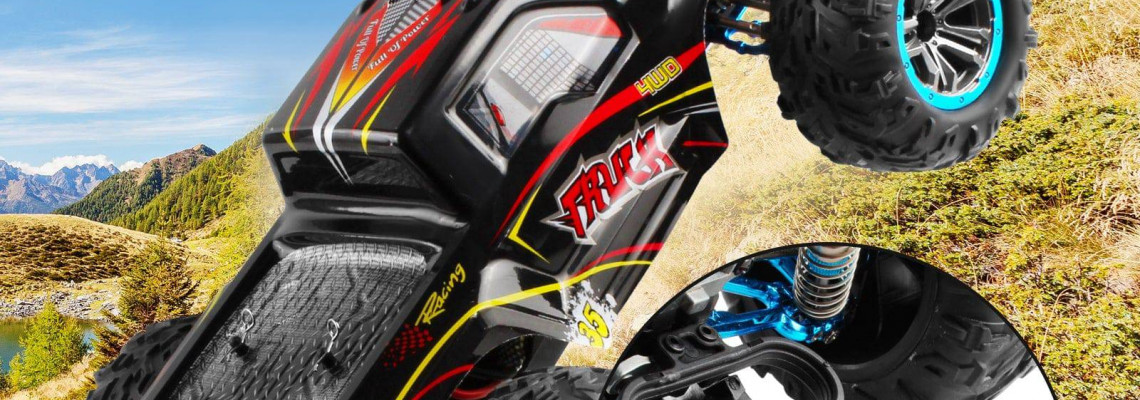
Choosing an RC Car: Gas vs Electric
Ten modeling specialists would likely give you eleven different responses if you asked them if they would rather have an electric or gas engine in their remote-controlled cars. When it comes to this somewhat contentious matter, opinions are usually that different.
You can ask yourself a few questions to make a definitive decision about the technology you want to put in your remote-controlled car or truck.
Remember that there is no reason to choose one option over another. Modelers frequently keep gas and electric vehicles in the same workshop.
You shouldn't have any significant problems as long as you have enough batteries and other supplies to keep everything in good operating order. That being said, depending on your tastes, you could start by thinking about electric motors.
Nitro vs Electric RC Cars
What are the Benefits of Electric RC Cars?
The most significant benefit of using an electric motor is that you won't have to constantly run out and obtain extra fuel. It's hard to deny that charging a battery is more complex than keeping a fresh fuel supply, even though you can now get a large choice of model fuels and parts online to somewhat offset this advantage.
To obtain some new juice from an electric remote control vehicle, all you need to do is plug it in. Although this used to take longer, the introduction of quick chargers and other devices has made the procedure much easier.
Another consideration is ease of maintenance, as you won't have to deal with fuel or other fluids. Lastly, consumables and electric motors are typically less expensive.
What are the Benefits of Using Nitro RC Cars
Electric remote control cars are quite popular due to their ease of use. However, in terms of how long you can run an RC car before needing to refill it, gas-powered or "nitro" vehicles might be superior.
They will also behave considerably more like a real motor vehicle because they are powered by an internal combustion engine. Some model car racing enthusiasts even enjoy the noise they produce because it gives them a sense of how well the car is doing and gives them the impression that they are operating a full-sized vehicle, such as a truck or car.
Gas vs. Electric RC: Which Has a Higher Top Speed?
It's interesting to note that velocity is typically not a deciding factor between the two technologies. Regardless of the underlying machinery that drives them, vehicles must operate within a specific tolerance.
Both kinds of technology ought to be able to reach 60 mph if, for instance, a Traxxas model is advertised as having that capability. However, nitro RC motors will require a recharge less frequently. You will also enjoy the additional benefits that come with this type of internal power plant.
Nitro vs. Electric RC: Which is Best for Beginners?
For novices, we advise keeping with electric models; for those with a little more experience or who want to tweak the engine and learn more about the mechanics, we suggest nitro or gas models. For those who are up to the challenge, driving and modifying a nitro vehicle can be a rewarding experience, even though it will need more patience.
Electric vs. Nitro RC: Which is Faster?
Generally speaking, most modelers will always utilize nitro as their fastest fuel source. Because of their exceptional skill and propensity to dominate both long and short courses, some RC racing organizations have even outlawed them.
If all other factors are equal, a liquid fuel-powered vehicle will almost always be quicker than an electric one. Although some high-speed electric cars are so fast off the mark that this is starting to alter, there's not much of a contest if everything is operating as it should. For instance, the Traxxas Bandit is capable of over 70 miles per hour!
Certain nitro RC cars' tendency to turn curves too quickly may be advantageous in several circumstances. This fuel source will undoubtedly be appreciated by those seeking an exceptionally generous acceleration curve.
Traxxas Gas Powered RC Car
Although these are gas-powered, they won't require nearly as much fuel as the car you may currently own. Despite being built with efficiency in mind, Traxxas vehicles have a high top speed.
Their gas-powered RC cars have good handling characteristics and some of the fastest top speeds in the business. There is definitely a learning curve, especially given the power devices provide.
Nevertheless, mastering this type of vehicle at last is immensely satisfying. When racing seriously, you should keep supplies like air filter oil on hand because these, like all internal combustion devices, eventually need them.
Traxxas RC Electric Cars
Even while they might not be able to reach the same high speeds as their gas-powered counterparts, electric Traxxas vehicles are typically incredibly robust and easy to repair. Because of this, they are among the most excellent options for people who frequently run vertical ramps and want to drive a vehicle that can withstand a great deal of damage. Since many of the more aggressive stunt racer models treat these devices essentially like remote-controlled skateboards, their electric models are highly sought after in this segment of the market.
Many Traxxas cars, like the Slayer Pro 4x4, are available in both gas-powered and electric-powered versions. Once they get comfortable racing it, some drivers will swap from the electric model to the gas-powered one.
They might even keep practicing with the electrically driven one. After all, there's no reason why you can't have both in your model room.
